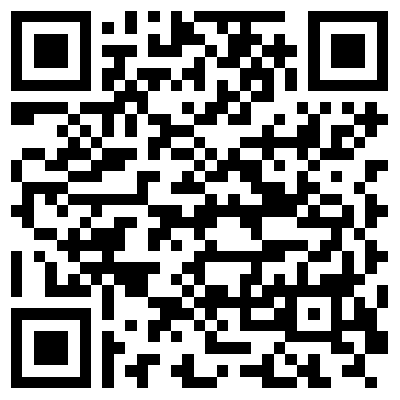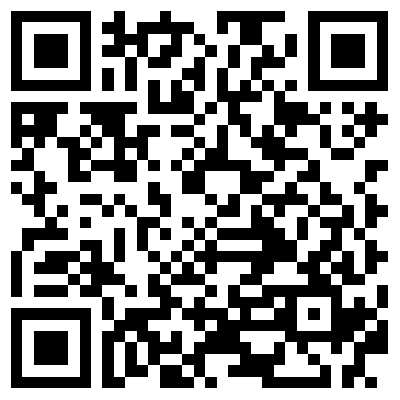A to Z of Golfing Terms and Jargon
Golf has a language all its own, including many old Scottish words and some real oddities, but also everyday words used in a special way.
Putt in Golf - A golf stroke made on a putting green to cause the ball to roll into or near the hole.
Chip in Golf - A "chip shot" in golf is a shot played from close to the green, usually within a few yards of the putting surface that results in the ball popping briefly into the air, then hitting the ground and rolling forward toward the hole.
Pitch in Golf - A "pitch shot" is a shot played with a highly lofted club that is designed to go a relatively short distance with a steep ascent and steep descent. Pitch shots are played into the green, typically from 40-50 yards and closer.
Swing in Golf - To hit a golf ball, the golfer swings a club while standing at the side of a motionless ball positioned on the ground. Such a swing involves angular motion. In physics, angular motion is defined as the movement of a body around a fixed point, or axis. A golf swing is a complex motion and there is still a disagreement on what constitutes a "good" golf swing.
A
Above the hole: Refers to a ball on any sloping green positioned so that the next putt is downhill. Downhill putts are harder to judge for speed and slope, and also riskier, so the good golfer aims to keep his ball 'below the hole' at all times.
Ace: A hole in one.
Albatross: Three under par score at a hole. Known as a 'double-eagle' in the US.
Approach: Short or medium shot to either the pin or putting green.
Attend the flag: To remove and hold the flag whilst another player putts.
Away: The person furthest way from the hole and the first to play.
B
Back: The last nine holes of a golf course. Also a tee position that makes hole the longest.
Banana : A slice or shot that curves strongly left to right. For some reason, 'banana' always refers to a slice, although a hook is simply a banana facing the other way. Also what professional golfers feel several times in a round to maintain their energy levels.
Below the hole : Your ball is 'below the hole' on a green if your next putt is uphill. Uphill putts can be struck firmly, meaning that any break is less important and there is less risk of running way beyond the hole. This is particularly true of fast greens, such as one finds in high-level tournaments. The opposite of above the hole.
Best Ball / Better Ball : Best score on a hole by partners in a best-ball match.
Birdie : One under par score on a hole.
Bogey : One over par score on a hole.
Break : In putting, the curve the ball will follow due to slope and/or grain in the green.
Bunker : Bunkers (sand traps) are shallow pits filled with sand and generally incorporating a raised lip or barrier, from which the ball is more difficult to play than from grass.
C
Carry : Distance a ball travels from impact to hitting the ground.
Chip : Short shot played with minimum loft from off the green.
Compression : Degree of resilience of a golf ball.
Condor : Probably the rarest of all scores in golf: four under par on a hole, ie a hole in one on a par five. Only four examples have ever been recorded, three of them by 'cutting the corner' on par fives with a dogleg, which considerably shortens the hole. Also called a 'triple-eagle' or double-albatross' in the US.
D
Divot : Turf removed when hitting a shot.
Dogleg : Left or right bend in fairway.
Dog Licence : If the winning margin in match play is 7&6, the victory (or defeat) is called a dog licence. In Great Britain, until 1987, dog owners bought a licence for their pet which cost 7/6d (pre-decimal currency = 37p).
Dormie : In match play, having a lead equal to the number of holes remaining to be played, ie. two up and two to play.
Draw : Controlled right to left shot with a moderate curve (or left to right for left-handers).
Drop : When the ball is lost, or there is an unplayable lie, a ball is dropped from arm's length at shoulder height onto the course.
E
Eagle : Two under par score on a hole.
F
Fairway : The short-grass area between the tee and the green.
Follow-through : Latter part of the swing from striking the ball to completion of the motion.
Fore : Loud shout, when a shot may endanger another player.
Four-Ball : Group of two pairs of golfers recording the better ball score of each pair based on gross or net scores.
Foursome : Group of two pairs of golfers playing shots alternately with the same ball. The partners drive at alternate holes, so one will drive the even numbers and one the odd numbers.
Free drop When a player is entitled to make a drop without a penalty stroke.
G
Gilligan : The opposite of a Mulligan. When gilligans are agreed in a match, your opponent has the right to ask you to play a shot again - typically a good drive or a long putt holed.
Gimmie : Very short putt close to a hole, awarded by other players. Only used in match play, or in friendly golf - in stroke play everything must be holed out.
Grain : Direction in which blades of grass grow and influence the speed and roll of the ball on the putting green. When looking 'into the grain' a green will appear darker, and 'with the grain' it will appear lighter or shinier. When putting 'across the grain' the ball will move left or right.
Green : Area of course around the hole with very short grass, for putting.
Green in Regulation : A green is considered hit "in regulation" if any part of the ball is touching the putting surface while the number of strokes taken is at least two fewer than par (i.e., by the first stroke on a par 3, the second stroke on a par 4, or the third stroke on a par 5).
Gross score : The total number of actual strokes played within a round, before handicap is taken into account.
Ground under Repair (GUR) : If an area of the couse is under maintenance and your ball lands there, you can remove your ball without penalty. Normally identified by stakes or a line.
H
Half Shot : Reduced swing when taking a shot. Used for shorter shots, or when extra control is required.
Hazard : A hazard is an area of a golf course which provides a difficult obstacle, which may be of two types: (a) water hazards such as lakes and rivers; and (b) man-made hazards such as bunkers. Special rules apply to playing balls from a hazard.
Hole out : To finish a hole by getting the ball in the cup or hole. Usually done with a putt, but sometimes with a chip from off the green, and occasionally with a full shot.
Honour : Given to the player scoring lowest on last hole, and granting the right to tee off first on the next.
Hook : Shot that curves strongly from right to left (or the opposite, if you play left handed!).
Hosel : Hollow part of clubhead where the shaft is attached. Sometimes called the 'neck'.
I
In play : A shot that comes to rest within the boundaries of the course (the opposite of 'out-of-bounds').
Interlocking grip : A right-handed player using this grip will interlock the little finger of his right hand with the index finger of his left hand (vice versa for lefties). A good grip for players with small hands. Used by Tiger Woods and Jack Nicklaus, among others.
In the leather : A ball that lies very close to the hole; so called because it was measured by the leather of the putter grip. In friendly play, a putt 'within the leather' is often conceded.
J
Jigger : Name of an old club with similar loft to a modern 4-iron. Confusingly, it was also sometimes used to describe a short pitching club for work around the green, otherwise called a pitching niblick, or lofting iron, roughly equivalent to a modern pitching wedge.
K
Kikuyu : Fast-growing, thick African grass that like full sunshine and hot weather. Not suited to woodland or temperate climates. A feature of courses in southern Africa, requiring great skill to play from around the greens.
Knee knocker : A short putt, which you really shouldn't miss, but often do.
Knife : Golfing slang for the 1-iron. In the days when all all iron heads were forged, they were often known as 'blades', and the 1-iron was the sharpest (and most dangerous to use) blade of all.
L
Lie : Resting place of the ball on the course, hence a 'good lie', or 'poor lie'. Also the angle at which the club head is set on the shaft. Tall people usually have clubs with an 'upright' lie (making the shaft more vertical) and shorter people use a 'flatter' lie (placing the club head further away from the body).
Links : Golf course on coastal terrain, usually with sand dunes and very few trees, and exposed to the wind. Literally a piece of ground that 'links' the mainland to the sea.
Lip : Edge of the hole.
Lip-out : A putt that catches the lip of the hole, turns around the rim without falling in.
Lucy : Rhyming slang: Lucy Locket = socket / shank. Arguably the worst shot in golf.
M
Marker : Thin, flat item used to mark the position of a golf ball on the green to prevent your ball from obstructing other player's shots. Small coins may be used, or specifically designed discs of metal or plastic. Also a person who keeps the score in a match, either a spectator following the player’s or one's opponent.
Match Play : Competition scored by the number of holes won or lost. The opposite of 'stroke' or 'medal' play. In this format, matches are decided before 18 holes.
Medal Play : Another name for 'Stroke Play', keeping the score on every hole. The lowest number of strokes, gross or net, wins.
Mixed : Man and woman playing together, eg: 'Mixed Foursomes'. Each partner plays off their own tees.
Mulligan : Chance to replay one's last shot, granted in a friendly game by an opponent. Not permitted in competition. Opposite of a Gilligan.
N
Net score : Score after the handicap strokes have been deducted from the gross score.
O
OB : Short for 'out of bounds'. Area outside the course play area, usually marked by a white line or white stakes, or boundaries such as walls, fences or railings. Penalties are to be taken for shots that result in the ball going OB.
P
Par : Standard number of strokes for each hole, always including two putts. Almost all golf holes are par 3, 4 or 5, although some new courses are building ultra long par 6 holes.
Penalty : Extra stroke(s) added to a player's score for violation of the rules, loss of ball, out of bounds, etc...
Pin : Flagstick.
Pin-high : A ball which is level with the pin, but to one side.
Play Through : When a group of slower golfers or those searching for a ball allow others to pass them. It is good etiquette to allow faster players to 'play through'.
'Plus' Golfer : A golfer whose handicap is better than scratch, so he has to add or 'plus' strokes to his gross score after a round, rather than subtracting them.
Q
Quarter Shot : Greatly reduced swing in taking a shot. Used for short shots, or when great control is required. (Also 'three-quarter' shot, somewhere between a 'half-shot and a full swing.)
R
Range : Practice area (also called the Driving Range).
Recovery : Shot played back into a good position from an unfavorable one.
Relief : Permission to lift and drop the ball without incurring a penalty.
Rough : Longer and thicker grassed area of the course.
S
Sandie : Term used when playing for money, betting against an opponent. Either a) making par on a hole after being in a bunker at some point, or b) getting out of a bunker and into the hole in two (an 'up and down').
Sand Save : Professional equivalent of a 'sandie' (version b). Getting out of a bunker and into the hole in two shots. Whether the player makes par or not is immaterial, it is the 'up and down' which counts. Expressed as a percentage of the number of times achieved out of the number of attempts, and one of the many statistical categories computed on the various pro tours.
Shank : Shot struck by the hosel of the club which causes the ball to go sharply right. Also called a 'socket'.
Shiperio : Similiar to a Mulligan, ie a second shot graciously allowed by your opponent, but in this case you can choose which of the two balls you will play.
Skinny : Said of a shot hit thin, which flies lower than usual and with no control.
Slice : A shot that curves violently to the right, banana-shaped. Usually caused by striking the ball with an open clubface and an in-to-out swing. The commonest shot shape among beginners and high-handicappers.
T
Thin : A shot somewhere between a top (see below) and a well-struck ball. The ball is hit below the equator, but not enough to get properly airborne, causing a low and uncontrolled shot. Especially destructive when chipping or pitching around the green.
Top : To hit the ball above the centre, causing the ball to dive down and roll rather than rise.
Turn : After the 9th hole, ie the halfway point on a golf course, where you 'turn' for home.
Tee : A tee is a stand used to support a golf ball. The tee is used to elevate a golf ball before striking it to commence play at every hole in golf.
Teeing Ground : The teeing ground is the area where play begins for a hole in golf. The terms tee, tee box, and "teeing ground" are synonymous. The boundaries of the teeing ground are defined by a pair of tee markers.
U
Unplayable lie : When it is impossible to play a shot because of ground conditions or an obstruction. The player may drop the drop the ball in a better position, in accordance with the rules, under penalty.
Up and Down : When a player fails to be on the green in regulation, but gets on it with an approach shot and one-putts into the hole.
V
Vardon Grip : Another name for an overlapping grip made popular by Harry Vardon. The little finger of the right hand (for right-handers) overlaps the forefinger of the left hand.
W
Whiff :To swing and miss the ball completely. Counts as a stroke. Also called an 'air-shot', or 'fresh air'.
X
X-outs Balls that do not meet a manufacturer's stringent quality controls, either because of a small cosmetic blemish or because they are marginally outside the size or weight tolerances (1.680" and 1.620oz). They are sold at a reduced price and the manufacturer's name is 'x'-d out. Otherwise perfectly normal and very good value, but beware of using them in competition as incorrect tolerances will make them illegal.
Y
Yardage : The distance between the player's ball and the target he is aiming for. The 'yardage' of a hole is officially the figure given on the scorecard from a specific tee, but will vary according to the position of the tee-markers and the pin position on the green. Top players use 'yardage charts' to calculate their distance from specific points on the course and to help with club selection.
Yips : Chronic missing (or fear) of short putts, usually because of a nervous twitch. Very difficult to overcome, but can be alleviated by unorthodox grips or long (eg 'broom-handle' or 'belly') shafted putters.
Z
Zoysia : A very thin bladed, slow-growing grass with deep roots that is resistant to drought and extreme temperatures.





